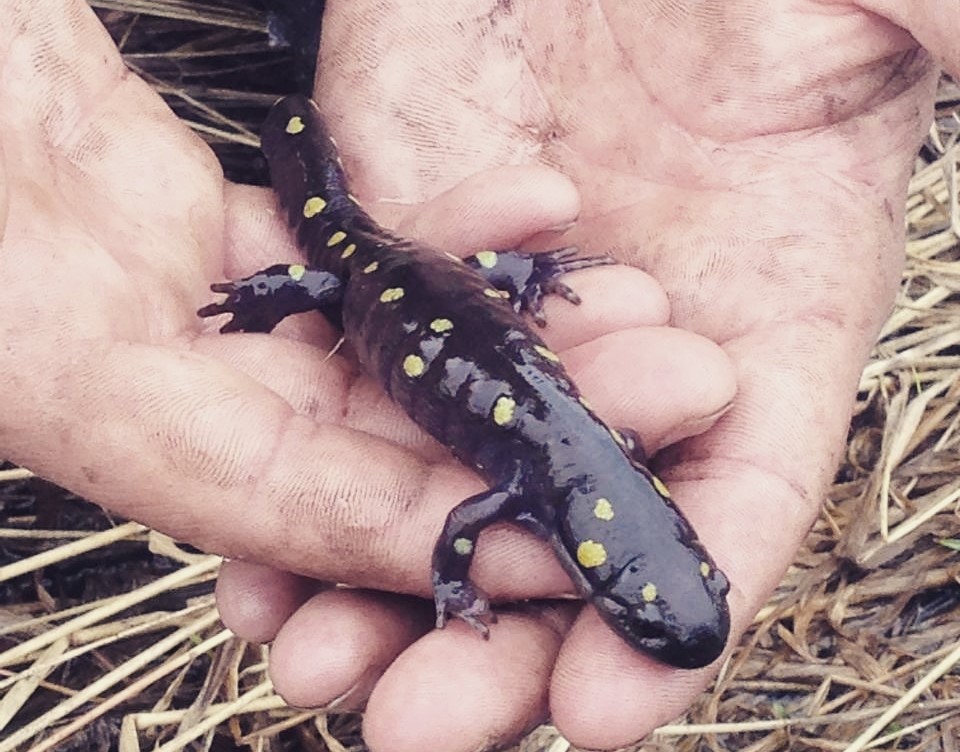One of the great things about long courses is the ability to see the natural shifts as they happen. Currently, we’re in the midst of the final thaw up here, and that’s indicated by the usual influx of birds, amphibians waking up and plants starting to flower.
A large portion of our curriculum at Jack Mountain and School Of The Forest involves observation exercise like sit spots, and weather journaling. This isn’t just because we like students to be engaged daily in the environment they’re participating in. Observing and becoming knowledgeable about patterns in the natural world over a long stretch of time is the only way to start to participating fully in nature. Knowing what the weather is doing right now doesn’t help you guess what will happen tomorrow unless you know something about how the weather tends to act in your area. Seeing and being able to ID a Spotted Salamander or a Spring Peeper (otherwise a pleasant anecdote) becomes a sign that spring is finally here to stay if you know something about the yearly ritual these little fellows go through as they wake up and make a mad dash for the pond or bog they were born in.
It’s great to be able to sight ID plants, animals, cloud types and anything else in the natural world. Academic knowledge is a large part of our current culture and the way most of us learn, but the value of that knowledge grows tenfold when it starts to compliment that ebbs and flows of the natural world you’re taking part in each day. So pay attention, keep a nature journal and start to notice the comings and goings of the world around you.








